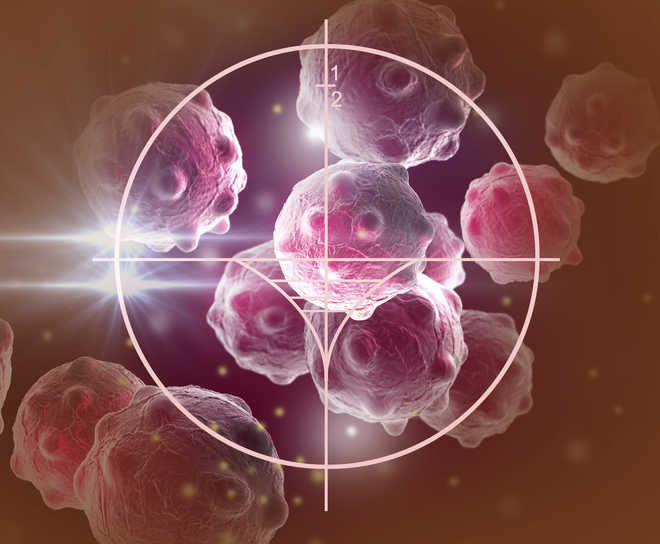
STOCKHOLM
Researchers have developed a new technique to identify aggressive heterogeneous tumours that need to be treated more rapidly than normal cancer growths—an advance that may pave the way for novel treatment approaches against such cancers.
According to the study, published in the journal Nature Communications, cancer cells generally vary in the number of copies of each gene and chromosome present in their genome—a phenomenon known as copy number alterations or CNAs.
The study noted that even within the same tumour, cells belonging to different anatomical parts of the lump may carry different CNAs.
The researchers, including those from Karolinska Institutet in Sweden, said that tumours with many CNAs were generally very aggressive and reformed more often, even after harsh treatments.
So they developed a new method called CUTseq, which can assess the amount and type of CNAs in many different parts of the same tumour, at a much lower cost than existing technologies.
"Multi-region tumour sequencing is going to be increasingly used in the diagnostic setting, in order to identify patients with highly heterogeneous tumours that need to be treated more aggressively. I believe that our method can play a leading role here," said Nicola Crosetto, co-author of the study from Karolinska Institutet.
According to the study, CUTseq uses DNA extracted from multiple tissue samples removed from the body, and even from very small portions of thin tissue sections.
In the new method, a comprehensive picture of the heterogeneity of CNAs in a tumour can be obtained with a single sequencing experiment where the DNA extracted from multiple regions of the same tumour is tagged with unique molecular barcodes.
CUTseq may also find applications outside cancer diagnostics, the researchers said.
"For example, CUTseq could be used as a platform for cell line authentication and to monitor genome stability in large cell line repositories and biobanks," said Magda Bienko, co-author of the study from Karolinska Institutet.
Bienko added that the method could also be applied in ecology to assess biodiversity using genome sequencing in a cost-effective way. — PTI



























